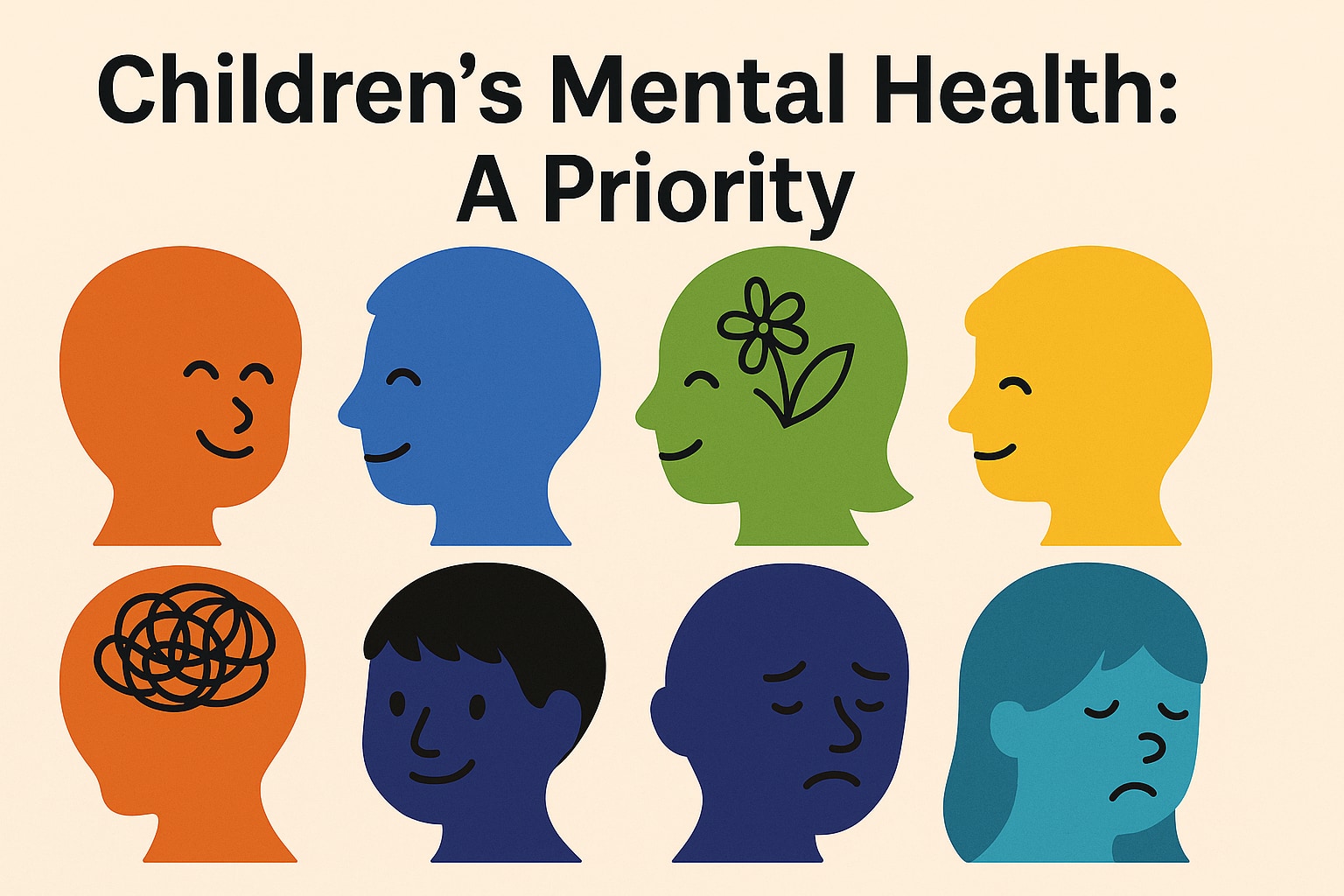Children’s Mental Health: An Educational Priority
Contributors: Marcia Banks and Magali Baptiste
Mental health is now a global emergency. According to the June 2022 World Health Organisation (WHO)(source: https://www.who.int/news/item/17-06-2022-who-highlights-urgent-need-to-transform-mental-health-and-mental-health-care?utm_source=chatgpt.com) , nearly 14 % of the global population ,at that time, were living with a mental disorder. More broadly, one out of every two people (source) will experience a mental disorder at some point in their lives. These figures reflect a growing reality, particularly among younger generations. (https://hms.harvard.edu/news/half-worlds-population-will-experience-mental-health-disorder)Even before the COVID-19 pandemic, nearly one in eight people were already living with a mental disorder in 2019 — around 970 million people. The health crisis has amplified the phenomenon where in 2020, mental disorders increased by 26%. Suicide claims more than 700,000 lives each year — that’s one every 40 seconds. (source) https://hms.harvard.edu/news/half-worlds-population-will-experience-mental-health-disorder
Children and Adolescents: Particularly Vulnerable
Young people are not spared. Around 1 in 7 young people ages 10 to 19 have a mental health condition. (source) 8https://www.projecthope.org/news-stories/story/the-global-mental-health-crisis-10-numbers-to-note/). That means that in a regular classroom the likely hood is high that several students are affected by a mental disorder. Half of all mental disorders appear before the age of 14, directly affecting a child’s emotional, cognitive, and relational development. Risk factors include:
- family instability,
- bullying,
- poverty,
- loneliness,
- excessive screen use.
To these we can add academic pressure and heavy exposure to social media. Together, these challenges significantly strain young people’s ability to grow up with peace of mind.
A Valuable Initiative in Our Educational Community
Magali Baptiste, learning support specialist at the International School of Geneva, has taken an active role in raising awareness of these issues by sharing with Marcia a presentation for teachers and several high-quality documents on children’s social-emotional development. Her work, praised for its clarity and relevance, inspired this summary.
“Every adult in contact with children has both the ability — and the responsibility — to observe with kindness and act with humanity. Mental health is built day by day, in the small and consistent gestures that shape our relationship with the child.” — Magali Baptiste, Learning Support Specialist, Ecolint
School: A Place for Observation and Action
Given this reality, schools and after-school programs have a crucial role to play. These are structured environments where children spend a large part of their time. They are also spaces where adults can detect early warning signs, support students’ social-emotional development, and implement prevention strategies.
Emotional Intelligence: A Key Tool for Prevention
Developing emotional intelligence is now recognized as a powerful tool for strengthening children’s mental health. It involves teaching them how to:
- identify and name their emotions,
- show empathy,
- manage impulsive reactions,
- communicate with kindness.
Studies show that good self-regulation skills at age 6 predict better academic success and more stable employment later in life. By age 11, self-control is already associated with a more balanced adulthood.
The good news: emotional intelligence can be learned. It can — and should — be integrated into educational practices from early childhood.
Simple activities such as cooperative play, group projects, or problem-solving exercises help develop these skills while fostering a calm and positive classroom environment.
Reading Beyond Behaviors
A child who “explodes for no reason” is often expressing a repressed emotion or unspoken distress. Disruptive behaviors (tantrums, defiance, withdrawal) are frequently disguised cries for help.
The challenge for adults is to adopt a posture of listening and acceptance, rather than reacting solely with punishment. It’s not about tolerating all behavior, but about understanding what lies beneath it, in order to provide the right support.
Play: A Fundamental Need
Often seen as a simple break, play is actually a cornerstone of child development. Through free play, children:
- strengthen their autonomy,
- learn to make decisions,
- manage frustration,
- develop social skills.
Play is also a natural tool for emotional regulation. It helps release tension through movement, laughter, or imagination.
Making Transitions Smoother
Daily transitions (lining up, washing hands, switching activities) are often delicate moments for children. Preventing crises involves:
- anticipation (with visual or audio cues at 10, 5, then 2 minutes),
- encouragement of effort (verbal praise),
- fun routines (songs, games, challenges),
- kind firmness, offering choices without abandoning essential rules.
Creating a Safe Environment
A calm and consistent adult can transform the atmosphere of an entire group. To build an emotionally safe environment, adults can:
- establish stable routines,
- value effort over outcomes,
- express daily joy in being with the children.
By doing so, the adult becomes a living model of emotional regulation. Their compassionate attitude helps children develop inner stability.
An Education that Prioritizes Mental Health
Integrating mental health and emotional intelligence into educational practices is not only a response to a public health emergency — it is a commitment to helping children become balanced, resilient, and compassionate adults.
Each kind interaction, each moment of free play, each respectful transition is a stepping stone toward a more humane, attentive, and mentally healthy world — starting in the classroom.
